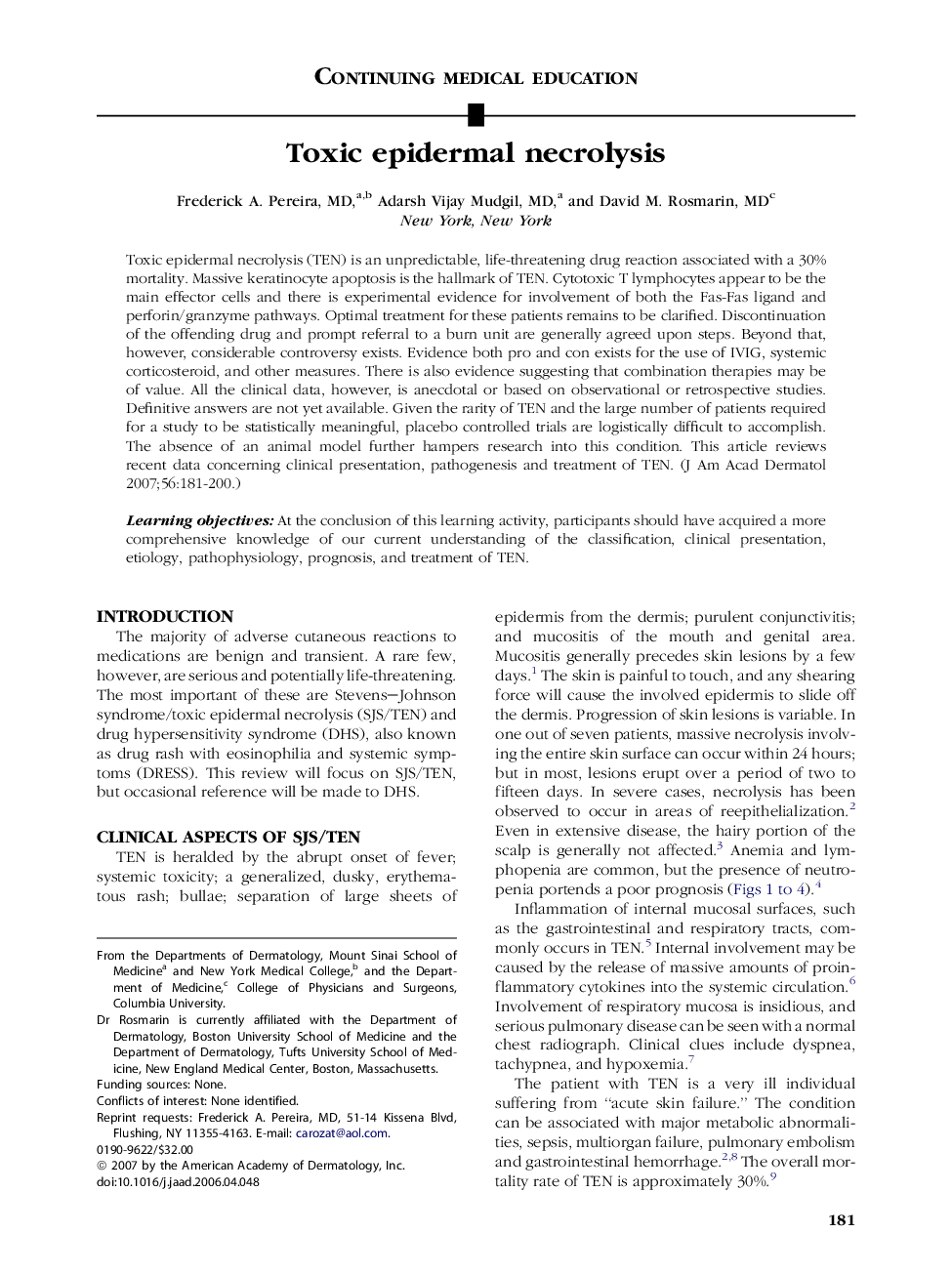| Article ID | Journal | Published Year | Pages | File Type |
|---|---|---|---|---|
| 3210930 | Journal of the American Academy of Dermatology | 2007 | 20 Pages |
Toxic epidermal necrolysis (TEN) is an unpredictable, life-threatening drug reaction associated with a 30% mortality. Massive keratinocyte apoptosis is the hallmark of TEN. Cytotoxic T lymphocytes appear to be the main effector cells and there is experimental evidence for involvement of both the Fas-Fas ligand and perforin/granzyme pathways. Optimal treatment for these patients remains to be clarified. Discontinuation of the offending drug and prompt referral to a burn unit are generally agreed upon steps. Beyond that, however, considerable controversy exists. Evidence both pro and con exists for the use of IVIG, systemic corticosteroid, and other measures. There is also evidence suggesting that combination therapies may be of value. All the clinical data, however, is anecdotal or based on observational or retrospective studies. Definitive answers are not yet available. Given the rarity of TEN and the large number of patients required for a study to be statistically meaningful, placebo controlled trials are logistically difficult to accomplish. The absence of an animal model further hampers research into this condition. This article reviews recent data concerning clinical presentation, pathogenesis and treatment of TEN.Learning objectivesAt the conclusion of this learning activity, participants should have acquired a more comprehensive knowledge of our current understanding of the classification, clinical presentation, etiology, pathophysiology, prognosis, and treatment of TEN.
